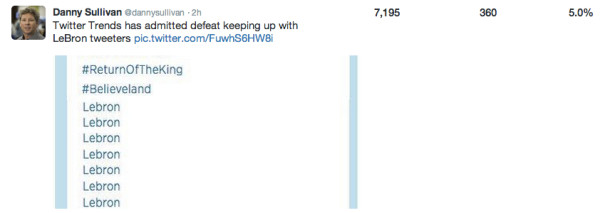.png)

Last updated on
April 17, 2024
With so many different digital marketing strategies now in use, picking your battles and designing a complete strategy is no easy task.
Email marketing and social media marketing are like apples and oranges. They are very different in execution and serve different purposes in your overall marketing strategy.
But for the purpose of growing a business, we must identify which channel outperforms the other and is worth more of your attention and resources.
About 60% of the internet marketers we asked told us that they believe email marketing outperforms social media.
The other 40% told us that email marketing and social media are just different. They both have their strengths and weaknesses.
Email is in general better at driving traffic and direct conversions and social media – with engaging with your audience.
Let’s explore further the strength and weaknesses of each channel:
Now let’s take a look at where email marketing for small business performs better than social media:
Reach – unfortunately, having 2,000 email subscribers and 2,000 Facebook fans is not the same thing.
Chad White from Litmus states that the algorithmic changes in Facebook seriously limit the organic reach of posts.
“If you have 2,000 Facebook fans usually only 2-5 people will see each post you publish” says Stuart Marler from Retriever Digital.
The Facebook organic reach has been decreased to 6% of your fan base in 2014 according to a study made by Social@Ogilvy.
The scenario is even worse if you have more than 500,000 likes – then it will be further decreased to 2%.
Danny Sullivan of Marketing Land wrote once that on his Twitter account less than 2% see his tweets.

Still – this is nothing compared to email where the average open rate is 21.73%.

In other words, if you have 2,000 email subscribers, 2,000 Facebook fans and 2,000 followers on Twitter – this is what you will get:
You can clearly see that email marketing far outperforms social media in terms of reach. And this is with an average open rate which you could be easily increased by writing better subject lines.
In same campaigns, you can reach out 40-45% open rates which is something that you can’t achieve with social media.
Higher click rate – According to other statistics email marketing campaigns can see 50-100 times the click-through rates from Facebook and Twitter.
“Email is still the king. It’s the 80% in 80/20. Quite literally. We’re seeing anywhere from x25 to x10 when directly comparing email and social in terms of clicks generated.” says Despreneur Magazine.
“I can tell you that I see a significant difference in traffic to blog posts and conversions to offers when I promote to my email list versus when I just promote to social media.” says Kristi Hines.
These are the average click-through rates for each channel:
For Facebook and Twitter- these are engagement rates. In other words, these are not only clicks but also comments, likes, shares, retweets, etc.
The famous Derek Halpern ran a test sending his latest blog post both to Twitter and his email list.
Here are the results he got:
His email list might be twice as large as his Twitter following but it still generated about 24 times more clicks.
Higher conversion rates - Email marketing drives more conversions than any other marketing channel – including social and search (according to a report by Monetate).
According to another report – 66% of online consumers made a purchase as a result of an email marketing message.
“Email marketing is much more efficient as we have a well segmented opted-in list.” says Mihail Stoychev from iSenseLabs.
Internet marketers believe that biggest reason for the highest conversion rate for email marketing is the ability to segment list and personalize your message.
With the options given by most email marketing providers, you can deliver highly targeted messages based on the behavior of your subscribers.
More direct conversions - Amir Chitayat from OpenMoves does a lot of both email marketing and social media.
What he has found is the results of email marketing are more tangible and with better ROI if you are looking for leads or sales.
For one of his clients (ecommerce B2C oriented business) he uses both email marketing and social media and spends about the same amount of budget on them.

You can see that email generated 1,192 direct transactions and 872 assisted transactions (total of 2,064) with a ratio of 0.73.
In other words, email marketing generated more direct conversions than assisted.
Social media generated less direct transactions – only 173 as well as 1010 assisted conversions with the ratio of0.58 meaning that they had less direct conversions and contributed les to assisted conversions.
According to Amir if this was B2B firm or a lead-gen firm the gap would be larger.
Better ROI – everything in business is down to ROI and cost of opportunity.
In other words, it makes sense to invest in a strategy A if it’s going to make you more money than in you invest in Strategy B.
In a study made by McKinsey & Co on how US companies generate new customers, they found that email marketing acquired 40 times more customers than Facebook and Twitter combined.
In the example by Amir Chitayat from OpenMoves, we already showed that email is responsible for more direct conversions and social media - for more assisted conversions.
The total conversions from email were 2,064 and the total for social media – 1183.
In other words – email generated 174% more total conversions than social media.
“Email will almost always have a better ROI as it’s less expensive and easy to deploy with very good conversions assuming design and content are following best practices.” says Amir Chitayat from OpenMoves.
According to Douglas Karr from DK New Media we should expect that the conversion rate from email marketing to be higher because of the explicit permission these contacts provided us.
“I believe social media followers are a bit more distant, listening to us on social media but not providing permission to necessarily push a message directly to them” he says.
It is easier to build – Derek Halpern ran an experiment and found that it’s much easier to build an email list than a social media following.
Here’s what he did.
He sent 1,000 visitors to his email opt-in page, and 1,000 visitors to his Twitter page.
As results – he got 500 new email subscribers – making it a conversion rate of 50%.
He didn’t say how many new Twitter followers he got but according to him it was nowhere near 500 followers.
Here's a great resource on email copywriting tips to help you build successful campaigns.
So all you have to do to grow your email list is integrate MailMunch with your website, place your opt-in forms at the right places and you will start getting email subscribers.
Now let’s take a look where social media performs better than email marketing:
Higher engagement rate – almost all of the marketing experts agreed on 1 thing – social media has a much higher engagement rate.
Brian Basilico found that email drives engagement when he sends traffic to his blog, podcasts and website in the form of comments and shares.
But it’s not near as the engagement he has from social media channels.
Stickiness and virality – social media content is much stickier and provides you an engagement in the long run.
Here we’re not talking only about the ability to pin posts on the top of your Facebook page.
Douglas Karr made a great example once on his blog.
If you have 1,000 email subscribers and you send an email you’re likely to have 202 people opening it and 33 people clicking on it.
If you have 1,000 Facebook fans and Twitter follower and send an updates – maybe 10 will see it and 3 will click on it.
This sounds bad at first but the reality is a bit different.
Your social media content was shared by a few people with 20,000 followers. And they reached 100,000 followers that shared it again and that way you managed to reach millions.
Most people don’t open emails more than once and they rarely share it with others. On the other hand, content shared on social media can go viral and the activity around it can continue for months. All you have to do is follow social media trends, your audience's needs, and share relevant posts.
More assisted conversions – Chad White wrote a while back that social media is more of a mid-funnel channel and email is more of a low-funnel channel.
In this sense, they’re not competing elements but sequential elements of the sales funnel.
In other words, social media engages the audience and helps email convert better.
As we showed in the example by Amir Chitayat social media tends to generate more assisted conversions that email (1010 assisted and 173 direct).
Better for branding - Kian Ng from ReadySpace said that his company is investing in social media mainly for the opportunity to create an image or to leave an impression.
According to him, that's something far harder to achieve with email marketing.
If you think about it – your branding, logo, your face is far more visible on social media channels.
People can interact with you and remember you.
On the other hand, email is more driven towards taking an action. Yes, people can see your name (a.k.a. who sends them the email) but that’s it.
3th party data (for advertising) – “Social results are better with paid ads, over organic, especially on Facebook.” said Stuart Marler from Retriever Digital.
The main reason for that is the social media channels now have access to 3th party data that you can use for highly-targeted advertising to reach your customers.
Facebook is agreat example here that has been doing this since 2013 and today the targeting is more sophisticated than ever.
You can easily target any type of demographics, interests or behaviors.

For example: if you have a travel agency you might want to advertise your offers to people who are frequently traveling. That way they’re more likely to convert.
You can easily do that with Facebook:

Another great example is if you’re selling pampers, you can easily target parents with newborns and toddlers.

So the real question is – should you invest in email marketing or social media marketing?
The answer is – why not in both?
Let me give you 2 reasons why you should combine them in order to get better results for your business:
Social media assists email marketing in conversion – we already said that social media is a mid-funnel channel which purpose is to engage your audience.
This helps you, later on, drive more conversions with email.
In the example made by Amir Chitayat social media generated 1010 assisted conversions. These are sales that would have never happened if the company was relying only on email.
Use social media to grow your email list – another way that social media can help is that you can use it to grow your email list and that way to increase your conversions and revenue.
The most typical ways that you can do that is by:
Email marketing and social media are like parallel universes that communicate with each other.
We suggest using email marketing when you’re looking more for reach, traffic and direct conversions. Social media, on the other hand, is a great tool that can help you engage your audience and assist you with making more sales.
There is no reason why you shouldn't use both. Just be sure to allocate your resources the right way.
How does email marketing vs social media marketing work for your business? Which one brings you higher ROI? Let us know in the comments below.
Tags:

M. Usama
April 19, 2024

M. Usama
April 19, 2024

M. Usama
April 18, 2024